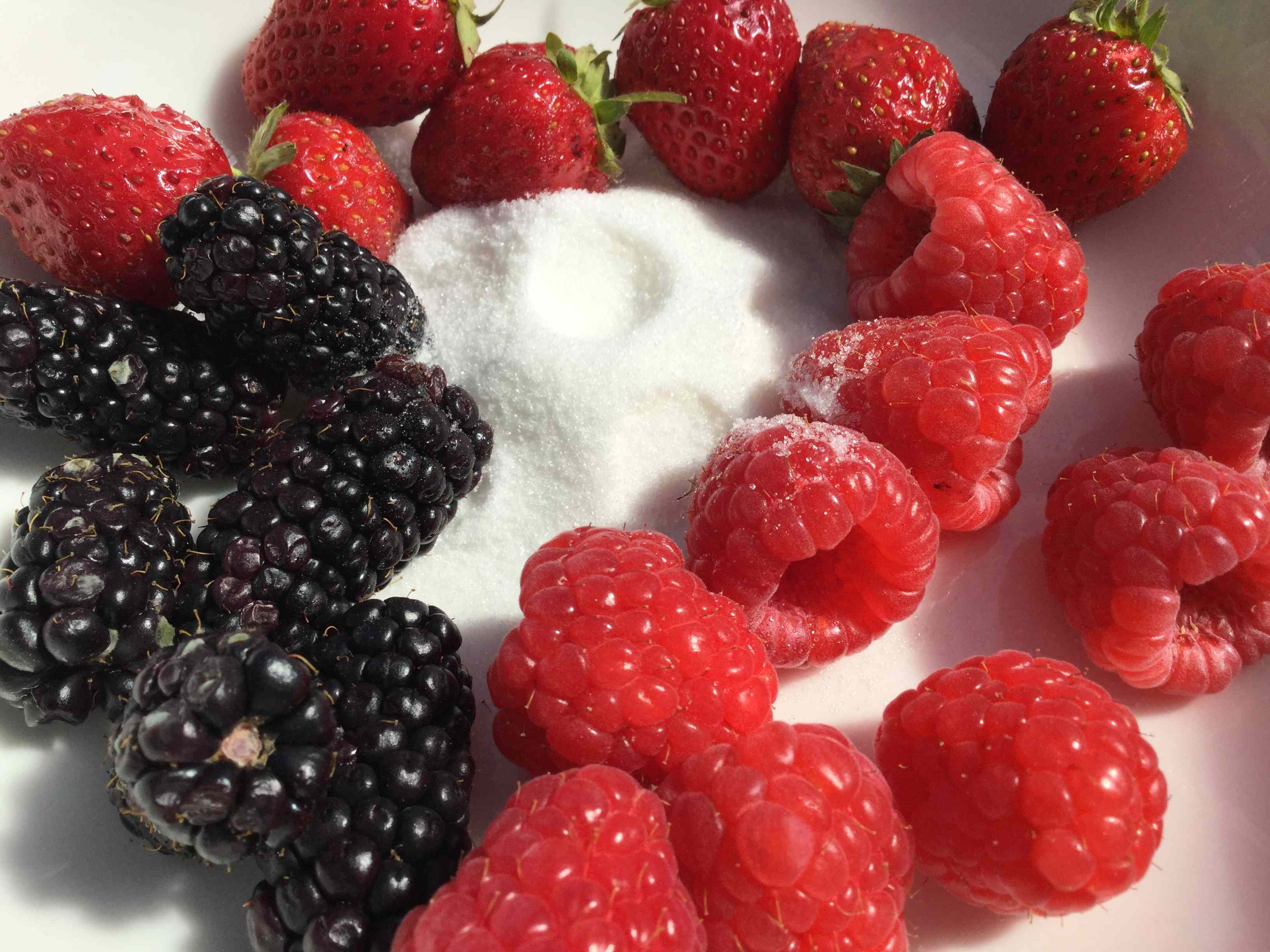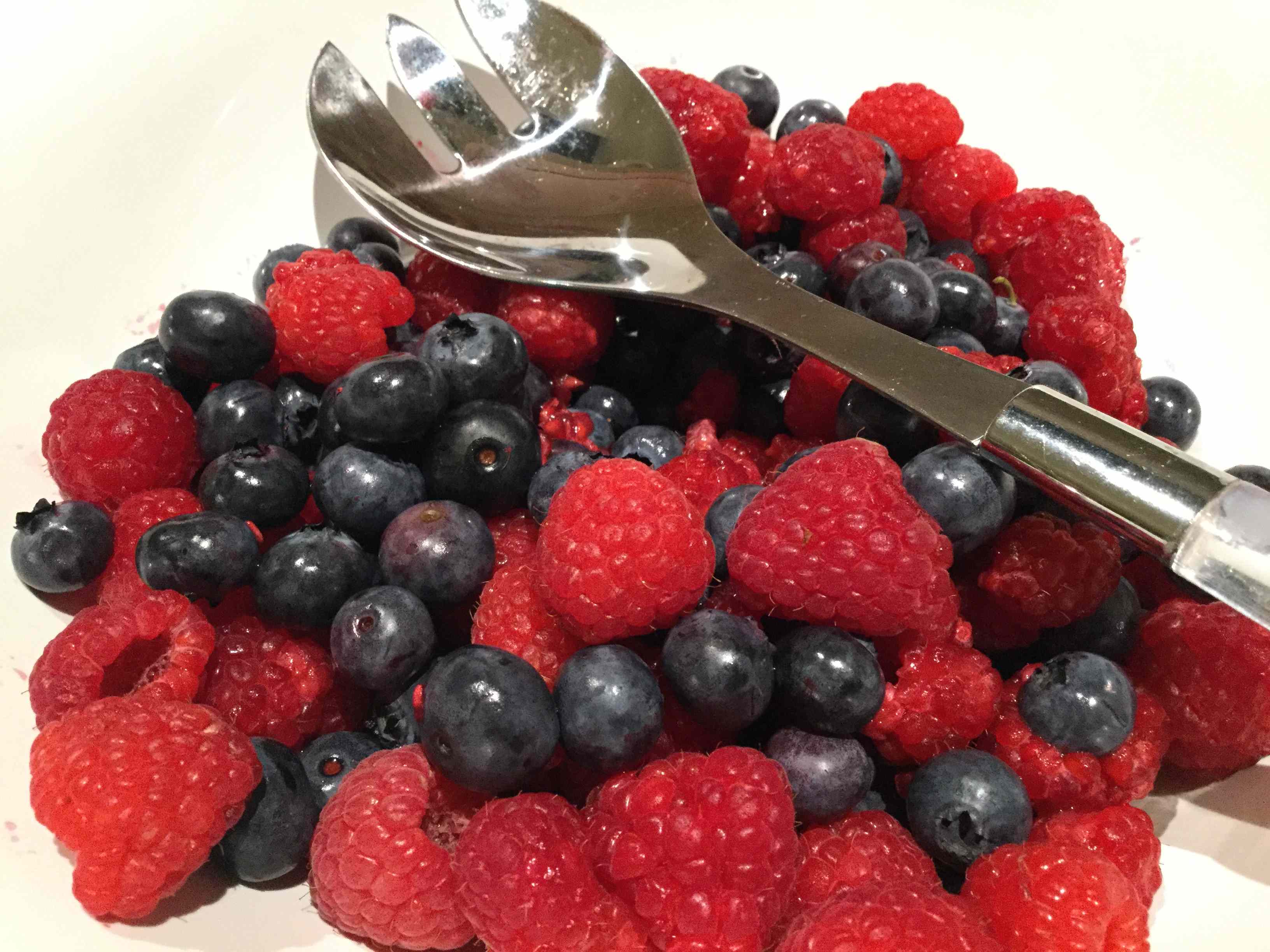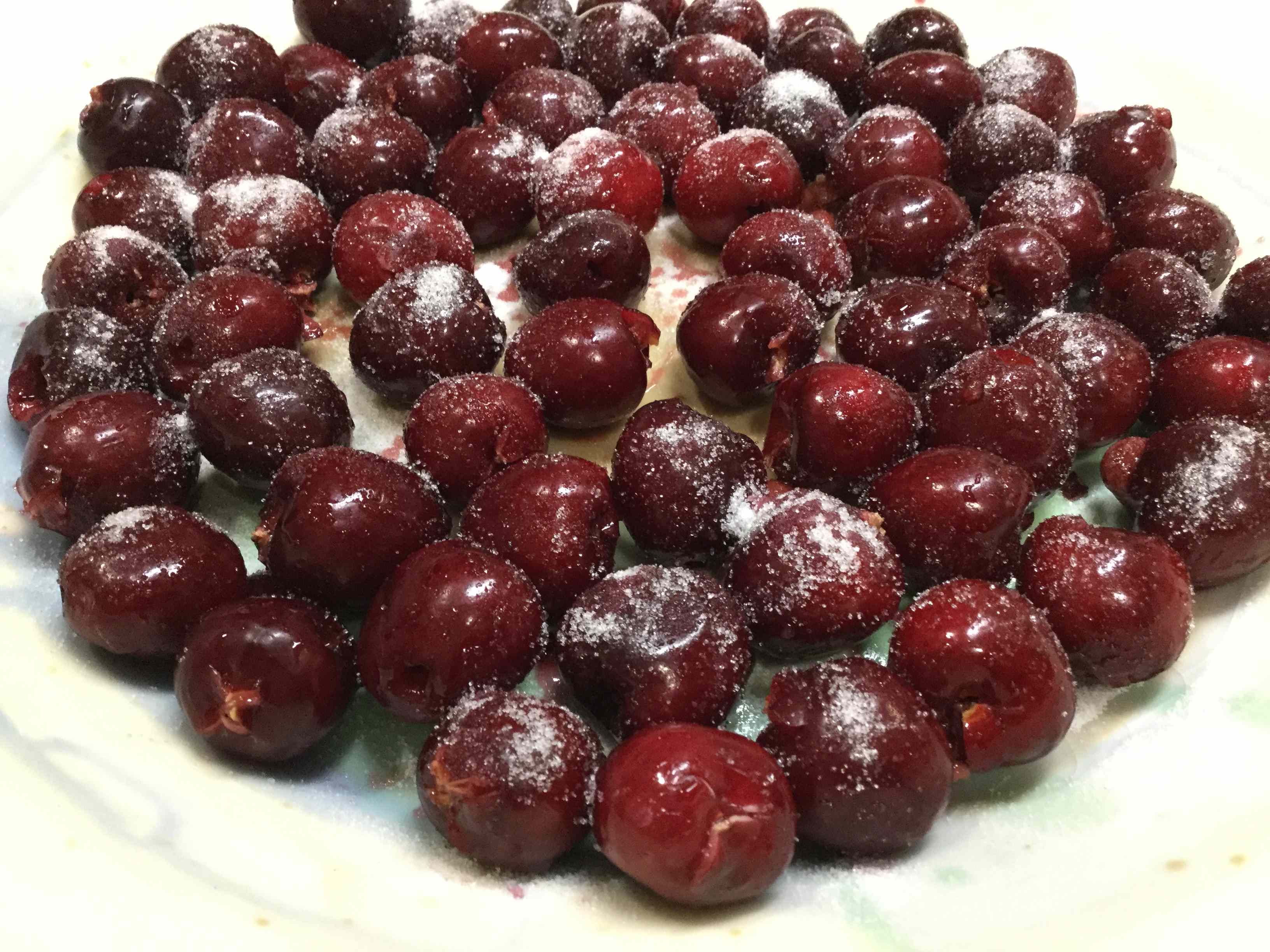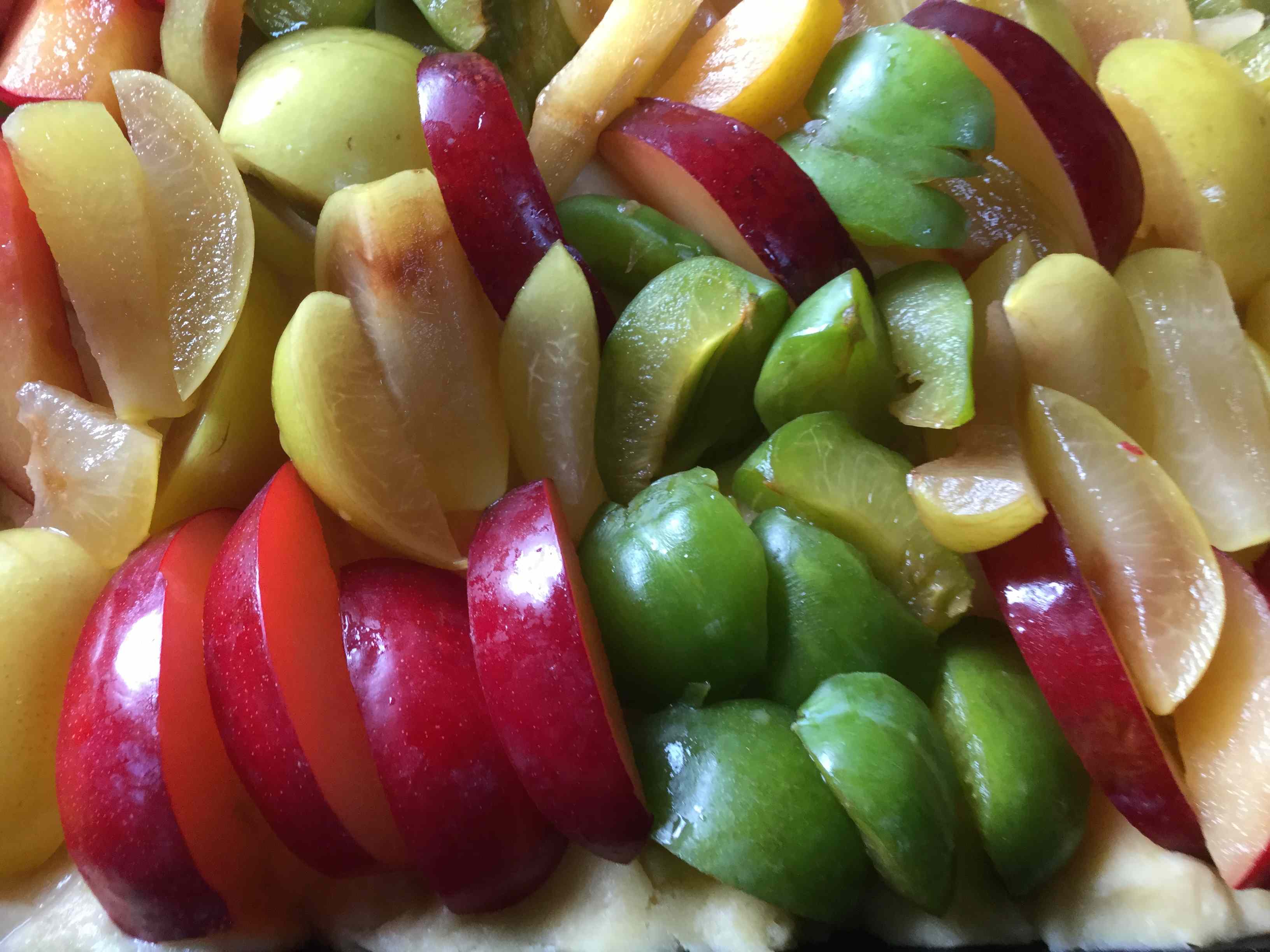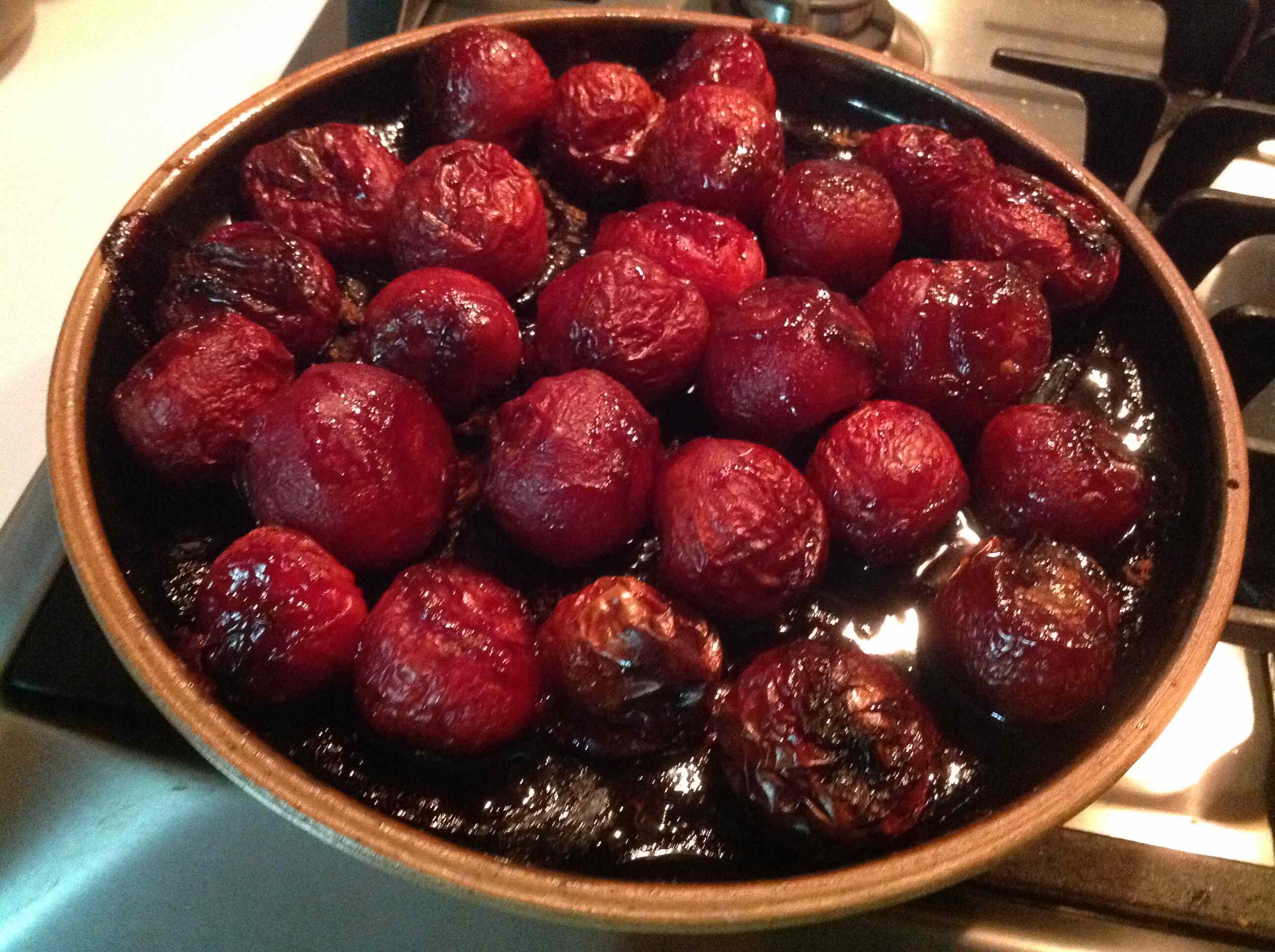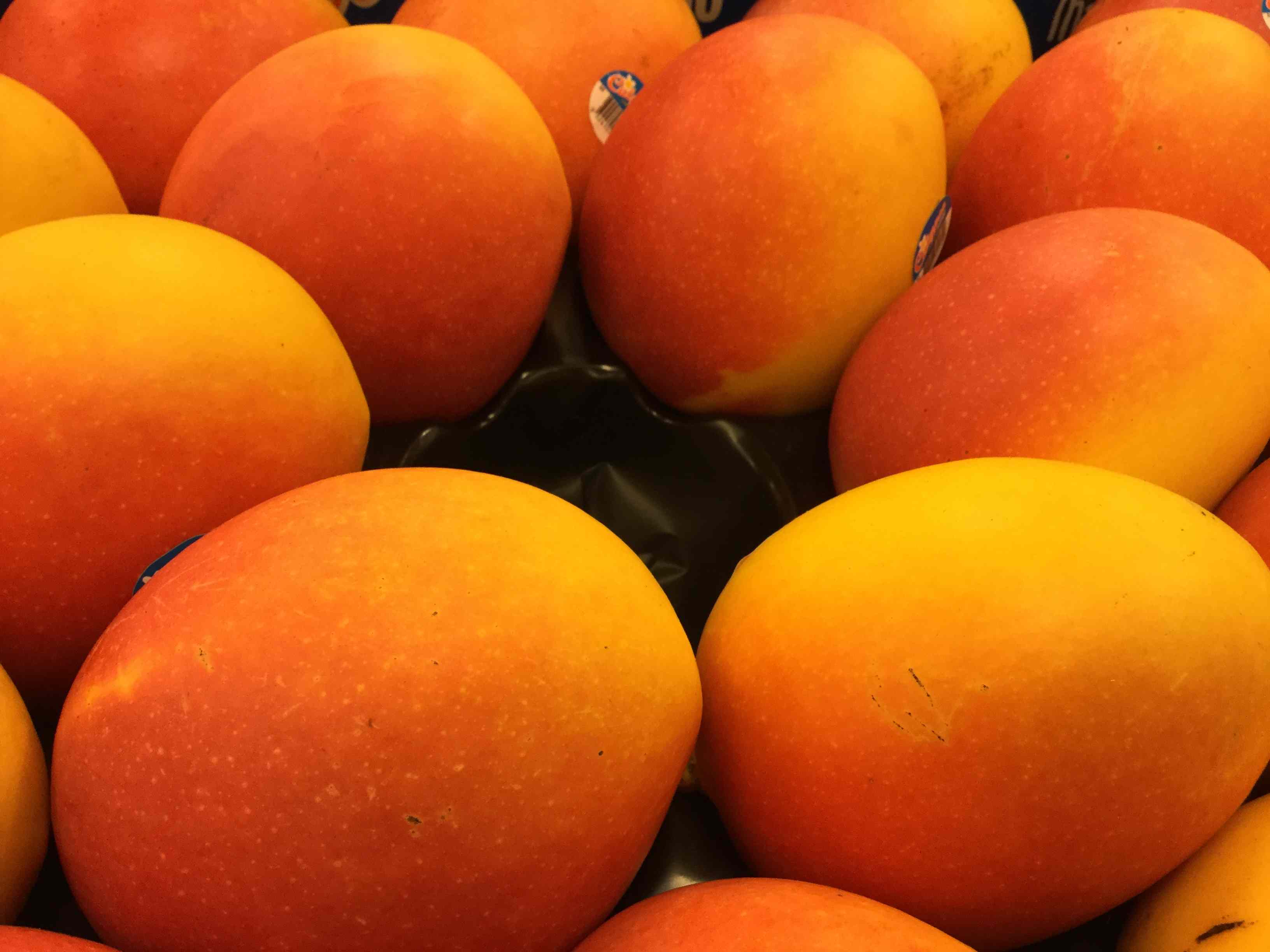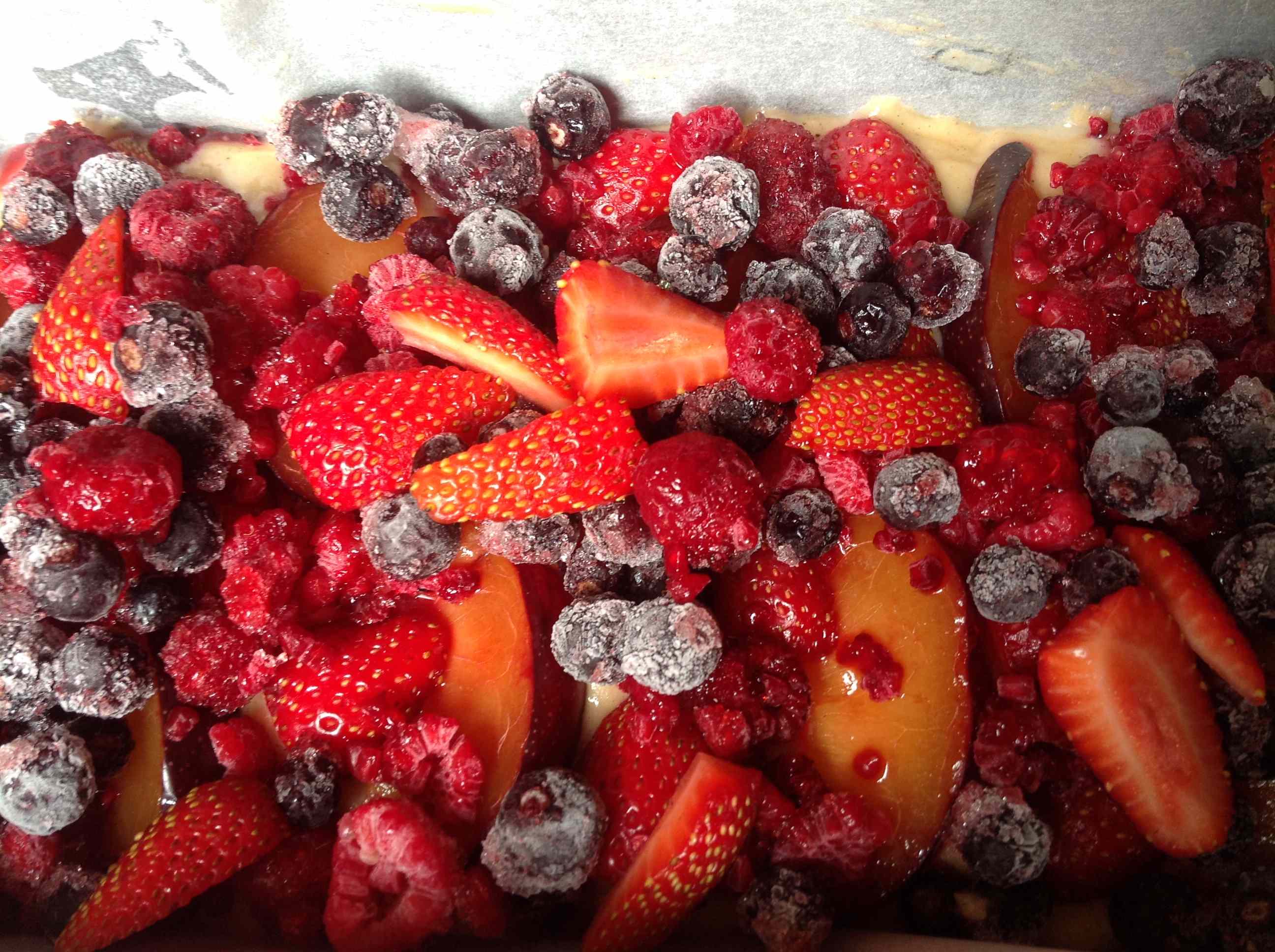Some years ago I had what, for me, was the most perfect of desserts. It was at The Willows, in its period as a fine dining restaurant in a lovely old mansion in St Kilda Road, Melbourne. It was lunch time, a warm December day and there were five of us around the table. Looking out the bay windows we could see the heat and light of the noon-day sun filtering through the willow trees. We felt like something cool and refreshing for dessert. What was offered to us was nothing more than a large white plate with three elements: a pile of beautiful blackberries, a small mound of castor sugar and a large dollop of thick, farmyard style, Tasmanian cream. It was suggested that we forget cutlery and simply pick up a blackberry, douse it in a little sugar and then roll it through the cream. Simplicity and perfection combined! The sign of a very brave and confident chef.
Recently in Tasmania we had guests for lunch at Olive’s Cottage. We drove the 10 kilometres to Hillwood especially for blackberries, strawberries and raspberries, picked less than an hour earlier from a back garden abundant in all manner of fruits and vegetables!
Had it been a few decades earlier we wouldn’t have had to drive anywhere. The reason is that George had an extraordinary garden, from which most of the output ended up in Olive’s kitchen. As we sat on the back deck facing the river and looking at the lawns and garden as they now are, we could remember Dad’s layout with the vegetable garden right in front of us and to the left. We could still “see” the raspberry canes along the right-hand side of the property. Loganberries and gooseberries were planted at the bottom of the vegetable garden, near the peach, plum and greengage trees. The strawberries were planted in rows like the vegetables. If we wanted blackberries, though, we would wait until late summer for the wild ones to ripen. In those days, in the fridge there would often be a jug of fresh cream from a local farm.
Berries with cream
Obtain the best berries you can. Brush them as required to remove any dust; only wash them if you really think they need it as the appearance of the fruit can be compromised. Serve with some castor sugar and the best cream you can get. Following is a photo of what each of our guests received, with cream passed around separately.
Degree of difficulty: 1/5 (very easy). Couldn’t be simpler!
Other summer fruit ideas
Apart from the range of berries, in summer we also have nectarines, peaches, apricots, cherries and plums to choose from, and mangoes of course.
If we want to do more than just serve fruit as is, we try to keep it simple. The less you fiddle with the fruit, probably the better the outcome.
A very simple fruit salad of whole berries or chunks of other fruits is always special. If you need to bring out flavours more, sprinkle with some castor sugar, toss gently and allow to sit and chill for a few minutes or an hour or so. To liven the fruit up further, squeeze a lemon or lime over the top and gently stir through.
Cherries can be served whole, chilled or over ice. Or make a clafoutis – one of the simplest of desserts that is also suitable for other fruits.
Stone fruits can be macerated in some sugar and lemon or lime juice. Or marinated peaches aren’t much more difficult.
Apricots and plums are terrific poached. This is especially the case with apricots where the flavour changes enormously. If you are poaching fruit, don’t make the mistake of adding too much water and ending up with thin tasting juice and fruit. Often all you need to do is rinse the fruit and pop it in a saucepan and the residual water might be enough. Sprinkle with the desired amount of sugar and toss gently, add a smidgen more water if you think it is necessary. Then cook covered over very gentle heat, and watch it like a hawk, else the liquid will dry up and the sugar will catch and burn. Use a timer set at two minutes so that you go back and check regularly. Toss very gently as the fruit at the bottom softens. Once all the pieces of fruit look like they are on the way to softening, cover and turn off the heat. Your reward will be full-flavoured fruit in a concentrated syrup. Use the same method when stewing or poaching other fruit, like apple or rhubarb. Serve with cream. If the fruit breaks up a little, it is not the end of the world; the taste will not be affected. A safer way to using a saucepan is to put the fruit and sugar in a bowl, cover then microwave in several short steps, turning the fruit a couple of times to obtain even cooking.
If you have a lot of plums you could try this German-style cake: plum sheet cake.
To bake plums, rub a pie dish with plenty of butter, add the plums, sprinkle with sugar then bake, maybe carefully turning the fruit over once or twice.
Mangoes are, of course, mangoes!
And if you have an excess of any of these fruits, you can try this plum and berry cake.



